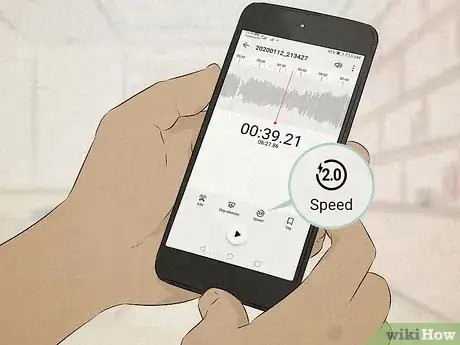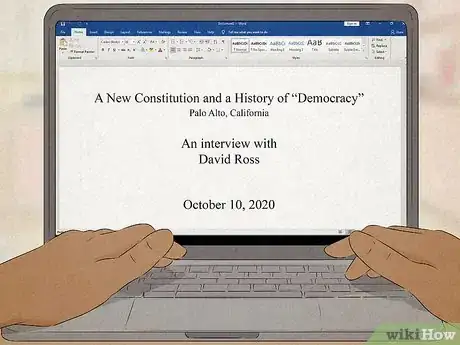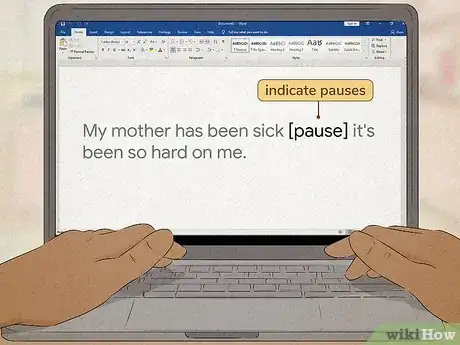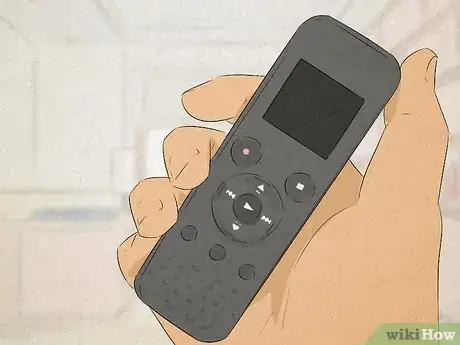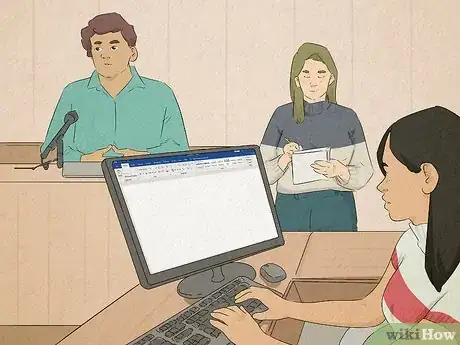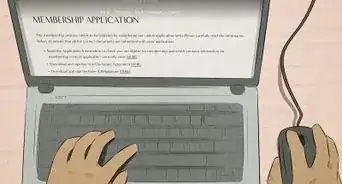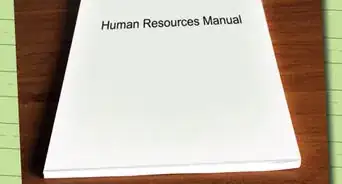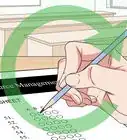wikiHow is a “wiki,” similar to Wikipedia, which means that many of our articles are co-written by multiple authors. To create this article, 22 people, some anonymous, worked to edit and improve it over time.
wikiHow marks an article as reader-approved once it receives enough positive feedback. This article received 23 testimonials and 96% of readers who voted found it helpful, earning it our reader-approved status.
This article has been viewed 257,813 times.
Learn more...
Transcripts are written or typed records of any proceedings. Transcripts are used to record court proceedings, business meetings, and even as records of radio, film and television programs. To write your own transcript of any of the above, you must be extremely attentive and be able to write and type quickly, as transcripts are an exact record of the spoken word.
Steps
Writing the Transcript
-
1Block out time to transcribe. Transcribing will probably take you longer than you imagined. On average, it takes 4 to 6 hours to transcribe one hour of a recorded proceeding. The time will vary based on your typing skills as well.[1] It may also take longer to transcribe if there are multiple voices on the recording or you are an inexperienced transcriber.
- Do not wait until the last minute to transcribe something.
-
2Listen to the recording. Listen to the recording once through before you begin transcribing. This can refresh your memory about the content of the recording, understand the flow of the conversation, and identify all of the voices on the recording. You can also compare the recording to the notes that you previously took.Advertisement
-
3Change the speed of the audio recording if necessary. Audio can be slowed down, stopped, and paused so that you can better understand the recording. Consider purchasing a foot pedal which will allow you to stop and start the recording with your feet. This will free up your hands and make the transcribing process quicker.[2]
-
4Format your transcript. Your transcript should include page numbers, a title, and the date. It's also a good idea to include an abbreviated version of the title and date in a header or footer on the page.[3] You also need to identify the different voices on the recording. You can use the first letter of each person's name or a nickname.
- A new paragraph should be started when there is a new voice, a new topic is introduced, or when someone is quoting what someone else has said.[4]
- Your transcript should not be one long block of text.
-
5Transcribe every single word. Transcriptions should be exactly the same as the recording. Do not add any words and do not omit any words with the exception of "ums" and "uhs."[5] Do not correct grammatical errors in your transcript either.
- "[sic]" is used to denote a grammatical error in the transcript. If someone says, "They is not ready." You would type "They is [sic] not ready." instead of correcting the grammar in the sentence.
- If a word is inaudible, type "(inaudible)" or use a symbol (e.g. *, ***) to denote that a word is missing. Also, add the time in the recording where the inaudible word is. This can help you when you go back to try to figure out what was said.
-
6Identify nonverbal communication. Conversations are filled with more than words. People often laugh, sigh, etc. during conversations. If someone laughs after they say something, put "[laughing]" after what he or she said. For example, "My dog is so funny. [laughing]" is appropriate.
- Never add your interpretation to nonverbal communication. For example, "[sighing with relief]" is incorrect. Simply typing, "[sighing]" is appropriate.
-
7Indicate pauses in the conversation. Conversations have ebbs and flows. Your transcript should reflect this. If someone pauses after he or she has said something, include this in your transcript using either ellipses or the word "pause." For example, "My mother has been sick...it's been so hard on me." or "My mother has been sick [pause] it's been so hard on me."
- Whatever method you use, be consistent.
-
8Proofread the transcript. Use a dictionary or spell check on a computer to make sure everything has been spelled correctly. However, be sure not to edit the transcript for other errors, such as improper word usage or grammar. The transcript should reflect the exact language used in the proceeding.
- Re-write your transcript if necessary, to adhere to any form or format deemed necessary.
- This is also a good time to check for correct punctuation as well.
-
9Listen to the recording and read your transcript simultaneously. This process is done to ensure that you transcribed correctly and can help you fill in any of the inaudible words. Again, your transcript should reflect the recording verbatim.[6]
Preparing to Transcribe
-
1Choose a recording device. While you may be listening attentively, it is still possible for you to miss or even misunderstand words or sentences. Having an audio recording will make the transcribing process much easier. The type of device you use will depend on your budget and your recording needs.[7] If you can afford to, it is better to buy a digital recorder instead of using a smartphone due to poorer sound quality.[8]
-
2Prepare yourself to take down notes. Make sure that you are sitting in a comfortable position and have everything you need for note taking. This may include a computer, paper, pens, and pencils.
- Developing your own shorthand will allow you to shorten words or even summarize phrases without losing their exact wording or meaning.
-
3Set up a recording device. This is a crucial component of any transcription. The recording device should be positioned as close possible to the voices you are trying to capture. If possible, try to do a test recording in the same room. You should also have a second recording device in case something happens. Although, this is not always possible.
- If your recorder is battery operated, make sure that it is fully charged and ready to go. Also, bring an extra set of batteries.
- If you are using a smartphone, make sure that the phone is adequately charged and be prepared to recharge your phone if you need to.
-
4Take good notes during the proceeding. Although you are recording the proceeding, it is important that you remain focused an attentive. Take notes on what is being discussed, body language of the people talking, and any thoughts or reactions you have to what is being said. These notes will help provide context when you are transcribing the document.
- Write down everyone who is speaking and any characteristics of these people as well.
-
5Transfer the recording to a computer. Digital recorders come equipped with software that will allow you to upload the recording to your computer. If you are using a smartphone, you will need a USB cable to transfer the recording to your computer.[11]
- Recordings done on Apple devices can be downloaded to your computer using iTunes. When given the option to sync music, select "Include Voice Memos."
- Apple users can also purchase DropVox for $2. This app will automatically upload your voice recordings, and you will not need a USB cable.[12]
Community Q&A
-
QuestionIf the speaker that I am currently transcribing is quoting what someone else has said, would I put this in quotation marks?
 Community AnswerYes, unless the reported speech has been paraphrased. For example, She said, "Could you loan me some salt?"(quoted) and, She asked me to loan her some salt (paraphrased).
Community AnswerYes, unless the reported speech has been paraphrased. For example, She said, "Could you loan me some salt?"(quoted) and, She asked me to loan her some salt (paraphrased).
References
- ↑ http://vananservices.com
- ↑ http://courses2.cit.cornell.edu/fit117/CP_T.htm
- ↑ http://courses2.cit.cornell.edu/fit117/CP_T.htm
- ↑ http://courses2.cit.cornell.edu/fit117/CP_T.htm
- ↑ http://courses2.cit.cornell.edu/fit117/CP_T.htm
- ↑ http://courses2.cit.cornell.edu/fit117/CP_E.htm
- ↑ http://commons.trincoll.edu/jackdougherty/how-to/record-and-transcribe/
- ↑ http://thewirecutter.com/reviews/the-best-voice-recorder/
- ↑ http://commons.trincoll.edu/jackdougherty/how-to/record-and-transcribe/
About This Article
Before writing a transcript, start by listening to the recording once through to help you understand the content and identify different voices. As you listen to the recording a second time, write down what you hear and start a new paragraph each time there is a new voice or a new topic is introduced. Then, copy the words exactly and make note of nonverbal communication, like sighs or laughter, by putting a description of it in brackets. When you’re done, listen to the recording again while reading through your transcript to check for errors. For tips on how to format your finished transcription, read on!


